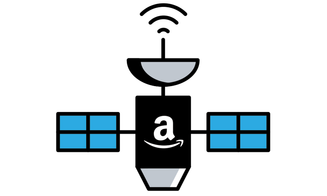Journey to the Center of the Earth

To unlock the terawatt potential of geothermal energy, MIT startup Quaise Energy is testing a deep-drilling rig in 2024 that will use high-power millimeter waves to melt a column of rock down as far as 10 to 20 kilometers. Its “deeper, hotter, and faster” strategy will start with old oil-and-gas drilling structures and extend them by blasting radiation from a gyrotron to vaporize the hard rock beneath. At these depths, Earth reaches 500 °C. Accessing this superhot geothermal energy could be a key part of achieving net zero emission goals by 2050, according to Quaise executives.
“Batteries Included” Induction Ovens

Now we’re cooking with gas—but soon, we may be cooking with induction. A growing number of consumers are switching to induction-based stoves and ovens to address environmental concerns and health risks associated with gas ranges. But while these new appliances are more energy efficient, most models require modified electrical outlets and cost hundreds of dollars to install. That’s why startups like Channing Street Copper and Impulse Labs are working to make induction ovens easier to install by adding built-in batteries that supplement regular wall-socket power. Channing Street Copper plans to roll out its battery-boosted Charlie appliance in early 2024.
Triage Tech to the Rescue

In the second half of 2024, the U.S. Defense Advanced Research Projects Agency will begin the first round of its Triage Challenge, a competition to develop sensors and algorithms to support triage efforts during mass-casualty incidents. According to a DARPA video presentation from last February, the agency is seeking new ways to help medics at two stages of treatment: During primary triage, those most in need of care will be identified with sensors from afar. Then, when the patients are stable, medics can decide the best treatment regimens based on data gleaned from noninvasive sensors. The three rounds will continue through 2026, with prizes totaling US $7 million.
Killer Drones Deployed From the Skies

A new class of missile-firing drones will take to the skies in 2024. Like a three-layer aerial nesting doll, the missile-stuffed drone is itself released from the belly of a bomber while in flight. The uncrewed aircraft was developed by energy and defense company General Atomics as part of the Defense Advanced Research Projects Agency’s LongShot program and will be flight-tested this year to prove its feasibility in air-based combat. Its goal is to extend the range and effectiveness of both air-to-air missiles and the current class of fighter jets while new aircraft are introduced.
Visible’s Anti-Activity Tracker

Long COVID and chronic fatigue often go unseen by others. But it’s important that people with these invisible illnesses understand how different activities affect their symptoms so they can properly pace their days. That’s why one man with long COVID, Harry Leeming, decided to create Visible, an app that helps users monitor activity and avoid overexertion. This year, according to Leeming, Visible will launch a premium version of the app that uses a specialized heart-rate monitor. While most wearables are meant for workouts, Leeming says, these armband monitors are optimized for lower heart rates to help people with both long COVID and fatigue. The app will also collect data from consenting users to help research these conditions.
Amazon Launches New Internet Service—Literally

Amazon expects to begin providing Internet service from space with Project Kuiper by the end of 2024. The US $10 billion project aims to expand reliable broadband internet access to rural areas around the globe by launching a constellation of more than 3,000 satellites into low Earth orbit. While the project will take years to complete in full, Amazon is set to start beta testing with customers later this year. If successful, Kuiper could be integrated into the suite of Amazon Web Services. SpaceX’s Starlink, meanwhile, has been active since 2019 and already has 5,000 satellites in orbit.
Solar-Powered Test Drive

The next car you buy might be powered by the sun. Long awaited by potential customers and crowdfunders, solar electric vehicles (SEVs) made by the startup Aptera Motors are set to hit the road in 2024, the company says. Like the cooler cousin of an SUV, these three-wheeled SEVs feature a sleek, aerodynamic design to cut down on drag. The latest version of the vehicle combines plug-in capability with solar panels that cover its roof, allowing for a 1,600-kilometer range on a single charge and up to 65 km a day from solar power. Aptera says it aims to begin early production in 2024, with the first 2,000 vehicles set to be delivered to investors.
Zero Trust, Two-Thirds Confidence

“Trust but verify” is now a proverb of the past in cybersecurity policy in the United States. By the end of the 2024 fiscal year, in September, all U.S. government agencies will be required to switch to a Zero Trust security architecture. All users must validate their identity and devices—even when they’re already connected to government networks and VPNs. This is achieved with methods like multifactor authentication and other access controls. About two-thirds of security professionals employed by federal agencies are confident that their department will hit the cybersecurity deadline, according to a 2023 report.
First Light for Vera Rubin

Vera C. Rubin Observatory, home to the largest digital camera ever constructed, is expected to open its eye to the sky for the first time in late 2024. The observatory features an 8.4-meter wide-field telescope that will scan the Southern Hemisphere’s skies over the course of a decade-long project. Equipped with a 3,200-megapixel camera, the telescope will photograph an area the size of 40 full moons every night from its perch atop a Chilean mountain. That means it can capture the entire visible sky every three to four nights. When operational, the Rubin Observatory will help astronomers inventory the solar system, map the Milky Way, and shed light on dark matter and dark energy.
Hailing Air Taxis at the Olympics

At this year’s summer Olympic Games in Paris, attendees may be able to take an electric vertical-take-off-and-landing vehicle, or eVTOL, to get around the city. Volocopter, in Bruchsal, Germany, hopes to make an air taxi service available to sports enthusiasts and tourists during the competition. Though the company is still awaiting certification from the European Union Aviation Safety Agency, Volocopter plans to offer three routes between various parts of the city, as well as two round-trip routes for tourists. Volocopter’s air taxis could make Paris the first European city to offer eVTOL services.
Faster Than a Speeding Bullet

Boom Technology is developing an airliner, called Overture, that flies faster than the speed of sound. The U.S. company says it’s set to finish construction of its North Carolina “superfactory” in 2024. Each year Boom plans to manufacture as many as 33 of the aircraft, which the company claims will be the world’s fastest airliner. Overture is designed to be capable of flying twice as fast as today’s commercial planes, and Boom says it expects the plane to be powered by sustainable aviation fuel, made without petroleum. The company says it already has orders in place from commercial airlines and is aiming for first flight by 2027.
Source: Spectrum










